Many things happening this week, in many directions, so little of it was photography. Part of this was, I was getting some warning signs that my ‘Main’ harddrive was about to fail, and I replaced it, copying it over onto a new drive – but the program that I used took something like 27-28 hours to complete this task (just over a terabyte of info,) and I suspect it would have gone much faster had I done it by hand. And then, I was checking carefully to make sure that the info was intact before proceeding with my normal uses. Since this is the primary storage for my photos, this meant I was doing nothing with them until I was satisfied.
However, I took a few in that time period, I just didn’t unload them to the new drive for a bit, and we’ll see a couple now.
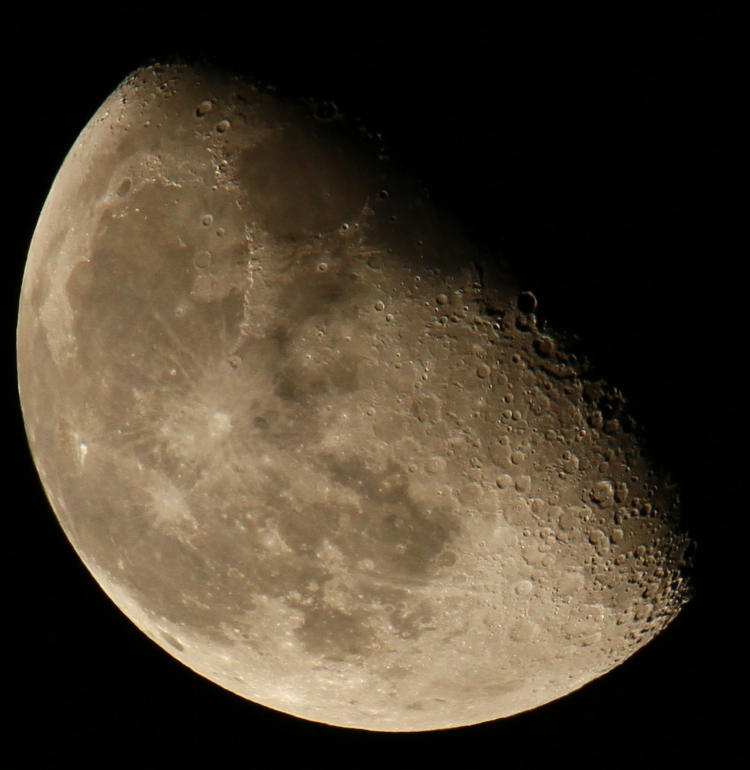
At about 1 AM on the 5th I snapped this waning gibbous moon – actually, one of many frames, making readjustments to focus between each to snag the sharpest image possible. This is sized for the blog, but clicking on it will take you to a full-resolution (but still cropped) version so you can see the detail that was captured – just do it carefully, because it’s damn sharp.
A couple of notes, and for these, I was referring to the excellent Maps of the Moon site, and clicking on the color, topographic maps therein will give you plenty of detail. This can be tricky, because the actual appearance of details changes significantly with the light angle, plus you have to deal with the apparent tilt caused by the time of night you’re taking the images – the meridian lines that they provide can help a lot, yet careful comparison of nearby details is usually necessary. So I’m providing a marked version below:
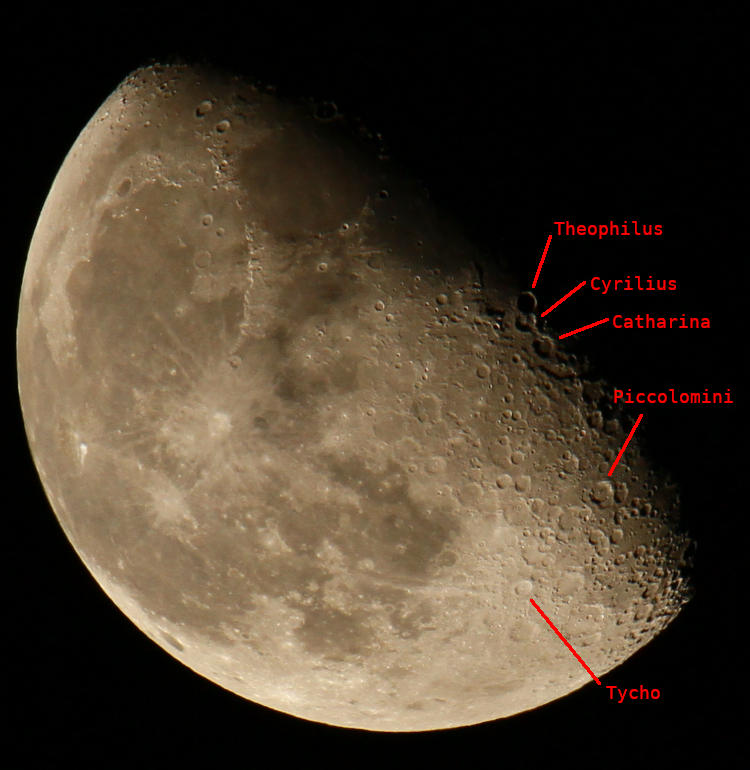
I was primarily focusing the lens with those three craters on the terminator, Theophilus, Cyrilius, and Catharina, because they provided the most contrast around small details, especially the central peak in Cyrilius. Except, as you’ll see in the full-res version, this wasn’t exactly a central peak (which it does have,) but the entire crater floor – it’s just too small in the viewfinder to resolve decently. However, my judgement for acceptable sharpness came from viewing the central peak in Piccolomini with the resulting full resolution images, because the bright spot of the peak and its subsequent shadow were distinct enough details to compare other frames against.
I note the position of Tycho here because, for reasons lost to time, I often have the goal of catching sunrise or sunset on its central peak (even though I’ve done this a few times before,) and here we can see we’re far from it – about three days, in fact. That’s three Earth days, because it’ll only be later in the same day on the moon, since a lunar day is 28 Earth days long. So I did indeed return three (Earth) nights later on the 8th, waiting until the moon had risen high enough for an unobstructed view here at Walkabout Estates. This meant the next images were shot at about 3 AM instead.
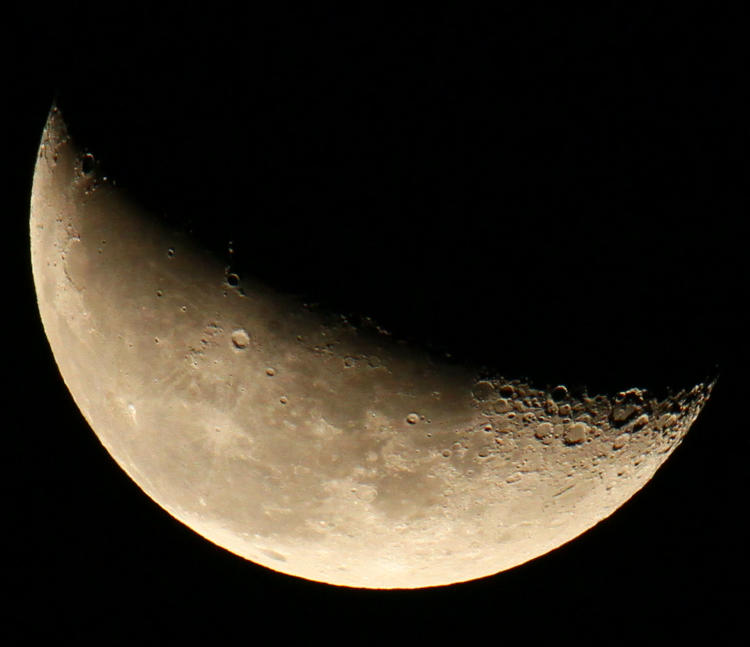
Once again, clicking on the image will give you the full-resolution version. If you’re good at spotting Tycho (the ejecta rays help) then you won’t need the following marked image, but I’ma provide it anyway.
[Side note: Every time I look at photos of the Tycho region, the ejecta rays that make the crater so distinctive seem misaligned, like they did not originate with Tycho but just off to the side. I don’t know why this is, but it appears on both hemispheres, so visible in multiple phases. The full-res photo above shows it better.]
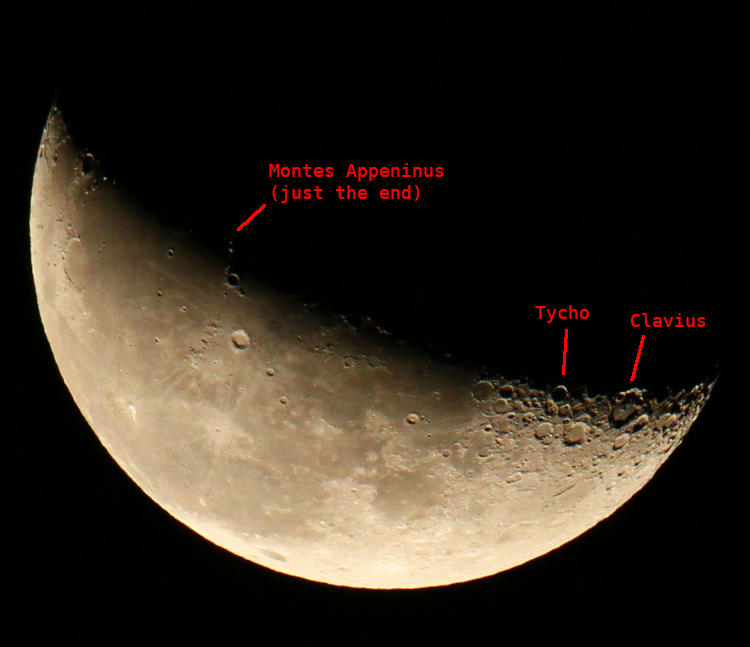
Yeah, I was a little too late, because the sun has already set on the central peak of Tycho – not even a vestige of light upon it can be discerned, and I played with the brightness a bit too. One of these days I’ll set up the telescope and tracking motor and do a time-lapse of the moon, see if I can actually capture the moment of sunrise or sunset, but in this case I suspect it occurred before the moon had even risen for my location, possibly even during the day. For giggles I have pointed out the end of the Montes Appeninus, or Lunar Appenines, a distinct mountain range on the moon that looked like a hair-thin line in the viewfinder – again, my focusing aid, but I didn’t trust this (the textured focusing screen prevents really crucial resolution, and forget autofocus,) and went with the same deal, refocusing between frames to choose the best.
Meanwhile, there’s a tiny detail that I could see in the viewfinder, don’t ask me how because it’s barely visible here at several times the size, but I’m putting it down to contrast. If you go over to the far right, at the moon’s south pole region, you can just make out a lonely spot of light from the sun just catching the tip of a mountain or the high edge of a crater – at present, the maps that I have aren’t detailed enough in those regions but I’d probably be guessing anyway. The Lunar Reconnaissance Orbiter has undoubtedly returned detailed photos of the region, because they’ve been surveying the poles for the possibility of ice deposits, but as yet I have found no access to those maps, plus who’s reading anyway?
I’ll close out with one last, actually among the first of the images from the second session, because it looks cool.
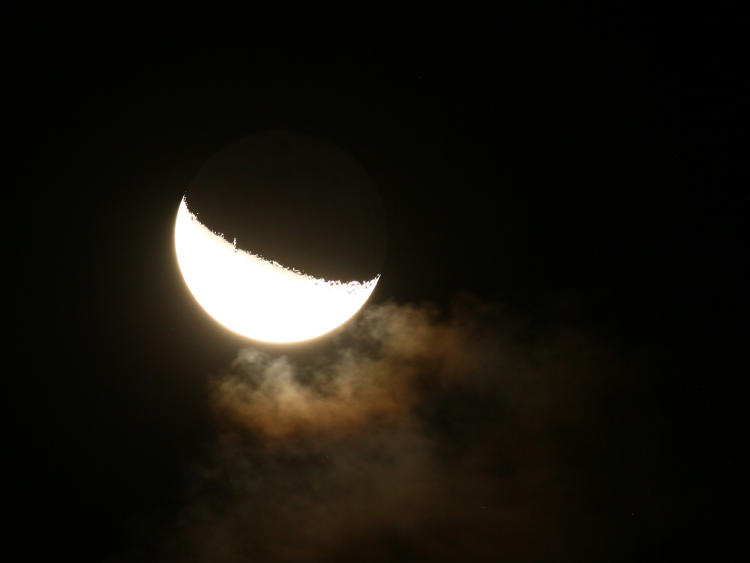
Some clouds were just clearing from around the moon and I quickly fired off some longer exposures to capture them, blowing out the lunar details but capturing a hint of earthshine in there – more detail would have been impossible without a tracking motor because the moon was moving during the exposure (a mere 1/3 of a second,) which shows in the full-resolution version that I have not bothered to link, so click if you want but it won’t do anything. Meanwhile, even this overexposed version shows no peak in Tycho – late late late.
More photos and other fun schtuff will be along shortly, including one that I’m probably just about to go out and get. You know where this’ll all appear.




















































